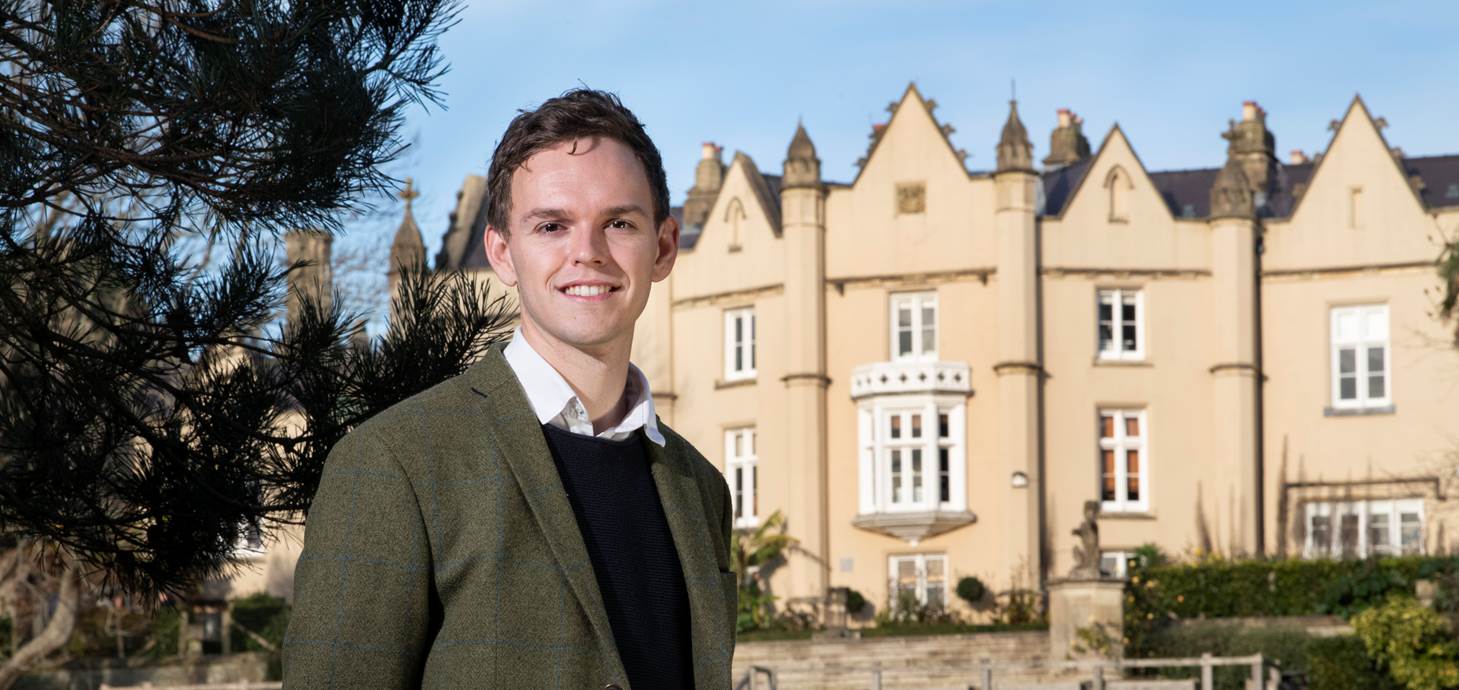These articles are now archived and will no longer be updated.
Historian’s new book reveals Swansea University’s key role during WW2 and its aftermath

Dr Sam Blaxland outside Swansea University's Singleton Abbey.
The history of Swansea University comes under the microscope in a new book published to mark the university’s centenary year in 2020.
The publication, titled Swansea University: Campus and Community in a Post-war World, 1945– 2020 (University of Wales Press) explores post-second world war academic and social change in Britain and its universities, and the changing way in which higher education institutions have interacted with their communities, using Swansea University as a case study.
The book, written by Dr Sam Blaxland, a Post-doctoral Fellow in History at Swansea University, covers a range of themes and topics and includes first-hand accounts and reflections based on a series of oral interviews with students, staff and graduates which illustrate the university’s changing position within the region, Wales and the wider world, from political action to local regeneration.
According to Dr Blaxland, the book can be used to draw historic parallels between Swansea University’s response to the second world war and the ongoing coronavirus crisis.
“Of course, Covid-19 is not a wartime enemy, but nothing since the second world war has so fundamentally disrupted the country’s economy, put such restrictions on people’s day-to-day lives, or facilitated a sense of local community spirit”, explained Dr Blaxland.
“The outbreak has provided a unique challenge for the UK, and for the city of Swansea, and Swansea University has been proud of the role it has played during this crisis. People from across the university have come together to help the NHS and keyworkers in the local region in numerous ways – from students providing free childcare to frontline staff, to experts producing hand sanitiser and face shields for the NHS.
“During the war, the university’s Singleton Campus was untouched by the three-night blitz in 1941, and so remained the scene of vital war work, becoming home to Imperial College London’s Royal School of Mines and the government’s Department of Explosive Research. Students also joined the Home Guard and were responsible for patrolling Swansea Bay.”
In Dr Blaxland’s book, he notes that so many staff and students were drafted into the war effort that by 1945, the number of students had plummeted so much that only 342 were studying at the University College of Swansea, as it was known then.
According to Dr Blaxland, the years after the war are particularly interesting as they also reflect what institutions like Swansea University might do when the worst of the current public health crisis is over.
He said: “From the early 1950s, the university welcomed a series of United Nations Social Welfare Fellows to Swansea, where people from dozens of countries around the world studied for qualifications in social work. This involved much more than study. They worked closely with people, businesses and companies in the local region to gain an understanding of the particular needs and problems of the region. They formed good relations with many townspeople, meaning that it was a cultural as well as an academic exchange.
“The war and its aftermath showed how Swansea University responded to a major event with creativity and determination and the same is true today.”
